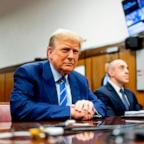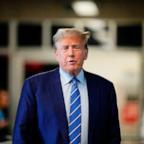'How Could It Be So Different?' North Korea Opens to Southern Tourists
North Korea opens ever so slightly so South Koreans can visit historic sites.
SEOUL, South Korea, Dec. 5, 2007— -- A chilly early morning at the South Korean side of the border facing north, Shim In Ku anxiously filled out the immigration papers for his long-awaited journey home. Shim, at age 67, left his hometown in North Korea when he was 11, during the Korean War.
"I was on my way home but got swept away by the crowd of refugees fleeing south from the northern communists. Then the war ended. My hometown became a part of North Korea. I never saw my family again," recalled Shim, who is traveling with a new family of his own: wife, children and two grandchildren.
The Shims are among the first batches of more than 300 South Korean visitors now offered a one-day tour of Gaesong, North Korea, just 50 miles north of Seoul. The rare glimpse of the world's most reclusive nation is the second tourism project spearheaded by Hyundai Asan, a South Korean company associated with the industrial conglomerate Hyundai Group.
The first project started nine years ago at Kumkang Mountain Resort on North Korea's eastern coast, that has attracted 1.72 million tourists so far. Hyundai Asan's development projects, which include an 815-acre industrial park in Gaesong area, have been endorsed by North Korean leader Kim Jong-Il.
But with a location closer to Seoul, both Hyundai Asan and North Korean authorities expect the new Gaesong City project to lure even more visitors and generate more cash. North Korea takes $100 from the $195 paid by each tourist. With an average of 300 visitors a day expected, the North Koreans, who are in dire need of cash, could pocket at least $300,000 every day, excluding profits from souvenir sales.
Gaesong, with its scenic waterfalls, historic Buddhist temples and tombs of kings is home to many legends and story tales. The tour includes a luncheon prepared "Gaesong style" at its main restaurant, called Unification, in the city center that's overshadowed by the gigantic gold statue of North Korea's late-founder, Kim Il-Sung, on top of a nearby hill.
The trip is carefully orchestrated and restricted. South Korean visitors are not allowed to take pictures of local residents going about their daily lives. One man who rode with ABC News took photos of the outside view from his bus seat, and North Korean authorities confiscated his camera. In every bus, three North Korean guides, or rather "minders," to be more accurate, keep their eyes on the visitors so that images of barren lands, cracked chimneys, and crumbling buildings in Gaesong do not get exported. When leaving North Korea, the security authorities searched all video and still cameras.




